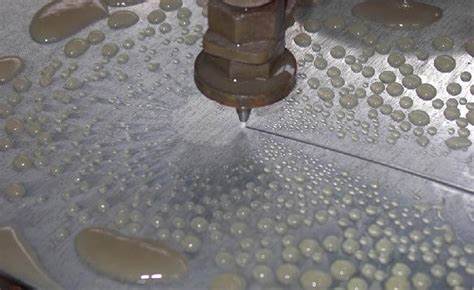News
Questions about water jet cutting
Recently,we have received a lot of good comments from customers. Water jet cutting is a versatile technology that is widely used in various industries due to its high precision, high efficiency and environmental protection.
Kunda will delve into the world of water jet cutting and explore its processes, applications, advantages, etc. Here are some questions about our customers ask as follow:
What is water jet cutting?

Water jet cutting is a process that utilizes a computer controlled (CNC) cutting machine equipped with specialized software. This software controls the movement of the cutting head, enabling it to cut a wide range of materials. The outstanding feature of Water Jet Cutting Machines is their non-thermal cutting method, meaning they do not generate heat that would affect the material being cut. This feature makes water jet cutting suitable for a wide range of applications, from demolishing concrete structures to cutting advanced materials used in aircraft fuselages.
How does water jet cutting work?
Water jet cutting uses a high-pressure stream of water (sometimes mixed with abrasive particles) to cut through materials. Depending on the material and application, the process can be divided into two main types: abrasive water cutting and pure water cutting.
Abrasive Waterjet Cutting
This method is suitable for hard materials such as metal, ceramic and stone. It involves the following steps:
A large electric pressure oil pump pushes water into a heavy-duty intensifier at a pressure of 2750 psi.
Due to the size difference between the hydraulic piston and the water piston, the pressure rises to 55,000 psi.
This ultra-high pressure water is directed to the cutting head through a steel pipe and then delivered through a precise orifice made of sapphire or diamond.
The pressurized water and abrasive mixture is ejected through a nozzle to form a powerful cutting stream.
Pure Water Cutting
This technology uses only high-pressure water and is ideal for softer materials such as plastics, rubber, foam and leather. Here’s how it works:
Water is pressurized to create a high-speed jet, which enables clean cutting of materials without the use of abrasives.
Use small nozzle sizes, sometimes as small as 0.08 mm, to make precise cuts and intricate designs.
We just delivered A Water Jet cutting machine to a plastic factory customer.
Key Components of a Waterjet Cutting Machine
High-Pressure Pump: This is the heart of the Water Jet System and ensures a steady water pressure. There are two main types: direct drive pumps and booster pumps.
Abrasive Delivery System: A metering device that controls the ratio of abrasive to water.
Cutting Head: This includes the orifice, venturi chamber, and mixing tube where water and abrasive are mixed to form the cutting stream.
Motion Device: A servo mechanism is used to drive the cutting head across the cutting surface.
Catch Tank with Cutting Table: Collects water and abrasive during the cutting process.
Control Software: Converts the CAD design into a digital file that guides the cutting head.
Types of WaterJet Cutters
Waterjet cutting machines are available in a variety of configurations to suit different cutting needs:
One-dimensional: For straight-line cutting.
Two-dimensional (XY): For linear and circular cutting.
Three-dimensional (XYZ): For more complex cuts involving three axes of motion.
Four-dimensional (XYZA): Adds rotational motion around the X-axis for additional cutting capabilities.
Five-dimensional (XYZAB): Combines linear and rotational motion for complex and precise cuts.
Applications of Waterjet Cutting
Waterjet cutting is used in a wide range of industries due to its versatility and precision:
Construction: For making signs, decorative panels, and custom designs.
Automotive: For rapid prototyping, cutting vehicle parts, and reducing material waste.
Aerospace: For high-precision cutting of complex parts such as wing sections and turbine blades.
Electronics: For cutting semiconductor wafers, circuit boards, electronic device frames.
Food Processing: Approved by the USDA for cutting vegetables, meats, and other food products without the risk of spreading bacteria.
Medical and Surgical Devices: Used to manufacture surgical instruments and devices with tight tolerances and precise cuts.
Benefits of Water Jet Cutting
Water jet cutting offers several advantages that make it the preferred choice for many applications:
Extreme Accuracy: Achieve cutting accuracy of ±0.0003 inches to ±0.0005 inches.
Versatile: Cuts virtually any material, regardless of thickness.
Environmentally Friendly: Uses pure water and natural abrasives, generating no toxic waste.
No Heat Generation: Prevents heat-affected zones, maintaining material integrity.
No Secondary Finishing Required: Produces smooth edges, eliminating the need for additional finishing.
Conclusion
Waterjet cutting is an efficient, precise and environmentally friendly technology that has revolutionized the way we cut and shape materials. Its ability to process a wide range of materials with high precision and minimal waste makes it a valuable tool for a wide range of industries. Whether you are in aerospace, automotive, electronics, or even food processing, waterjet cutting offers unparalleled versatility and efficiency.





